Train travel offers scenic views and a more pleasant overall experience than flying. For starters, there’s no need to stand in line for half an hour prior to boarding, in order to be intimidatingly scanned and frisked and then dispossessed of your toothpaste simply because the tube won’t fit inside the eye of a needle. Notably, at least as it pertains to the health of our planet, travel by rail is significantly better for the environment than travel by air. Most popular flight routes around the world have corresponding train routes, and while you may need to allow more time to travel by train, this time tends to turn into part of the travel experience — leaving a better impact on both the planet and yourself.


Sustainability Breakdown: The True Carbon Footprint of Trains Versus Planes on Popular Routes
Calculating the emissions of train travel versus flying
The specific emissions vary depending on factors such as distance, aircraft type, load factors, and train technology. Nevertheless, the comparison of the key routes discussed here consistently reveals that train travel emits significantly less CO2 per passenger than flying. No matter where you’re traveling to, you can use the emissions calculator at Flight Free USA to calculate the carbon footprint of getting there by air, and then use the emissions calculator at EcoTree to see how much carbon you’re keeping out of the air when traveling by train. During the trip planning process, use Rome2Rio to route the best train trip to your destination if you’re unsure of where to begin your research.
New York to Los Angeles
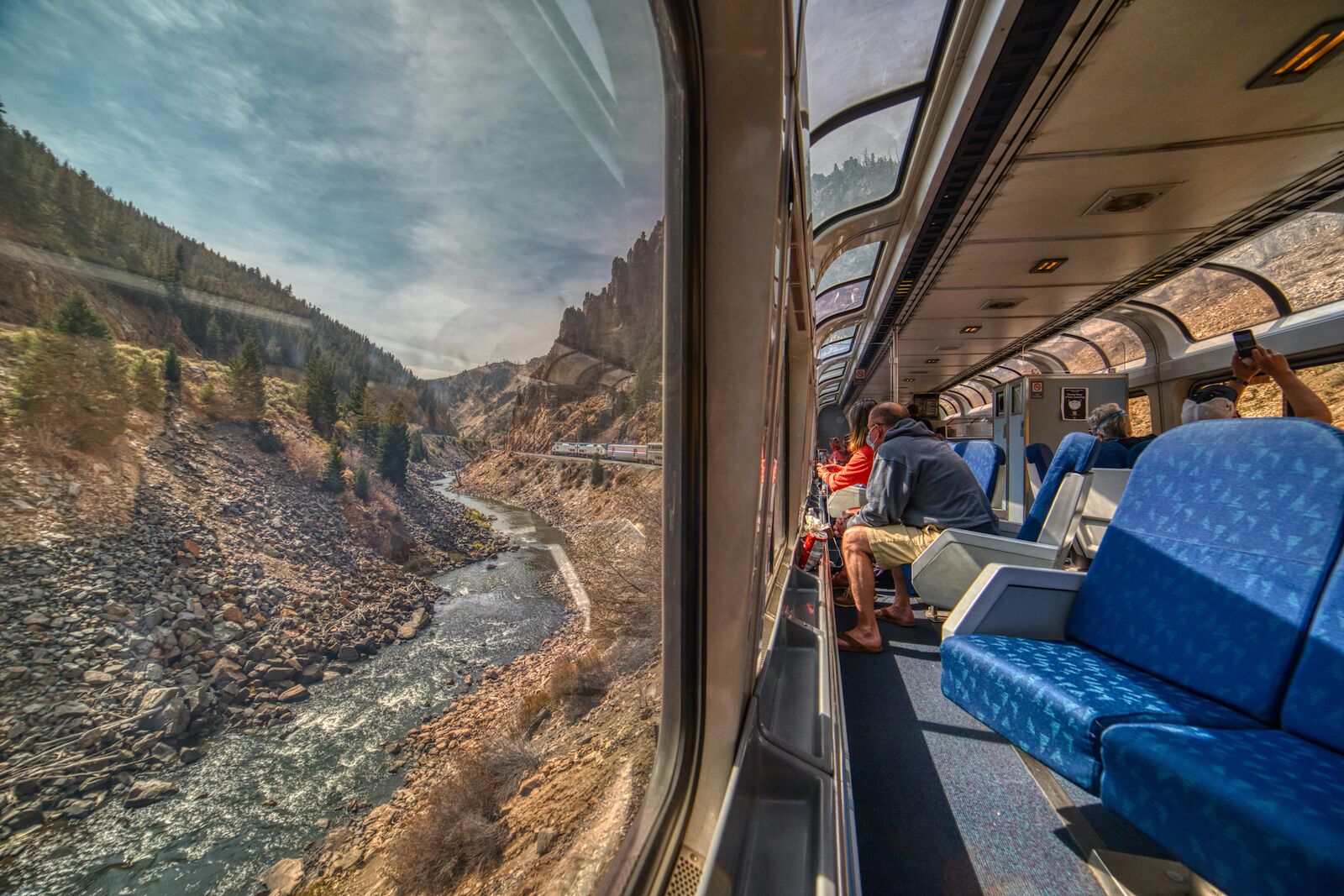
Photo: Jacob Boomsma/Shutterstock
The distance between New York and Los Angeles spans the length of the continental United States at approximately 2,475 miles (3,979 kilometers). Connecting the country’s two largest cities, it’s a popular route for domestic air travel. However, flying on this route comes with a substantial carbon footprint. According to estimates from Flight Free USA and elsewhere, a one-way flight from New York to Los Angeles emits around 1,532 pounds (695 kilograms) of CO2 per passenger. This high carbon emission is mainly due to the significant fuel consumption and associated emissions of airplanes.
On the other hand, traveling by train offers a more environmentally friendly alternative. While direct train services between these two cities are limited, options such as Amtrak’s long-distance routes or combinations of shorter train journeys can be utilized. The trip takes about three days, requires changing trains from the Lake Shore Limited to the Southwest Chief in Chicago, and costs less than $600 each way in coach class. You’ll emit about 119 kg of carbon, a reduction of nearly 80 percent versus traveling the same route by air.
Beautiful things you’ll see en route:
- New York’s Hudson River Valley shortly after departing from the city.
- The craggy peaks of the Sangre de Cristo Mountains through Colorado and New Mexico, in particular the striking Raton Pass that serves as a border between the states.
- The mighty Mississippi River and the expansive landscapes of the American Midwest, including much of Iowa.
London to Paris
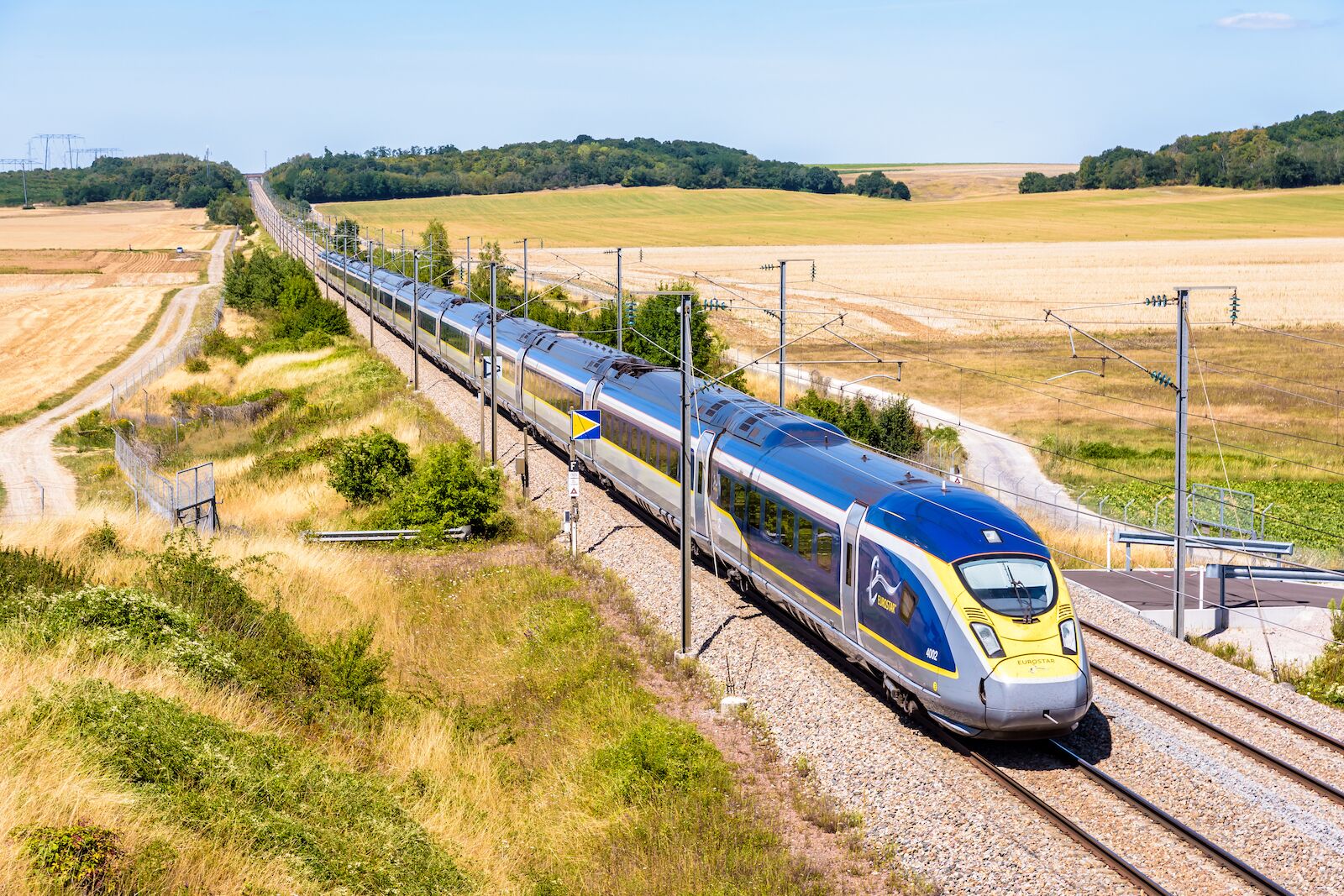
Photo: olrat/Shutterstock
The London to Paris route is a well-traveled corridor connecting two major European capitals. For this journey, taking a short-haul flight of about 220 miles is a popular choice. On average, a one-way flight from London to Paris emits approximately 122 pounds (55 kilograms) of CO2 per passenger.
In contrast, traveling by train on the Eurostar line offers a greener option. Train travel throughout the UK and beyond is quick and easy, and the high-speed rail service links London with Paris through the Channel Tunnel, allowing travelers to enjoy a scenic journey while significantly reducing their carbon footprint. Eurostar estimates that a one-way train trip emits around 10 pounds (4.5 kilograms) of CO2 per passenger, making it a much more sustainable choice compared to flying. This trip takes about two hours, so you’re not even losing much (if any) time by choosing to stay on the ground.
Beautiful things you’ll see en route:
- Kent Countryside: The train passes through the charming countryside of Kent, known as the “Garden of England.” Enjoy rolling green hills, picturesque villages, and idyllic farmland as you make your way towards the coast.
- White Cliffs of Dover: As the train approaches the coast, you may catch glimpses of the famous White Cliffs of Dover. These stunning chalk cliffs rise dramatically from the sea, creating a breathtaking sight.
- English Channel: Once aboard the Eurostar train, you’ll travel through the Channel Tunnel, which connects the United Kingdom and France. While underground, you can imagine the unique engineering feat taking place beneath the English Channel.
Tokyo to Osaka
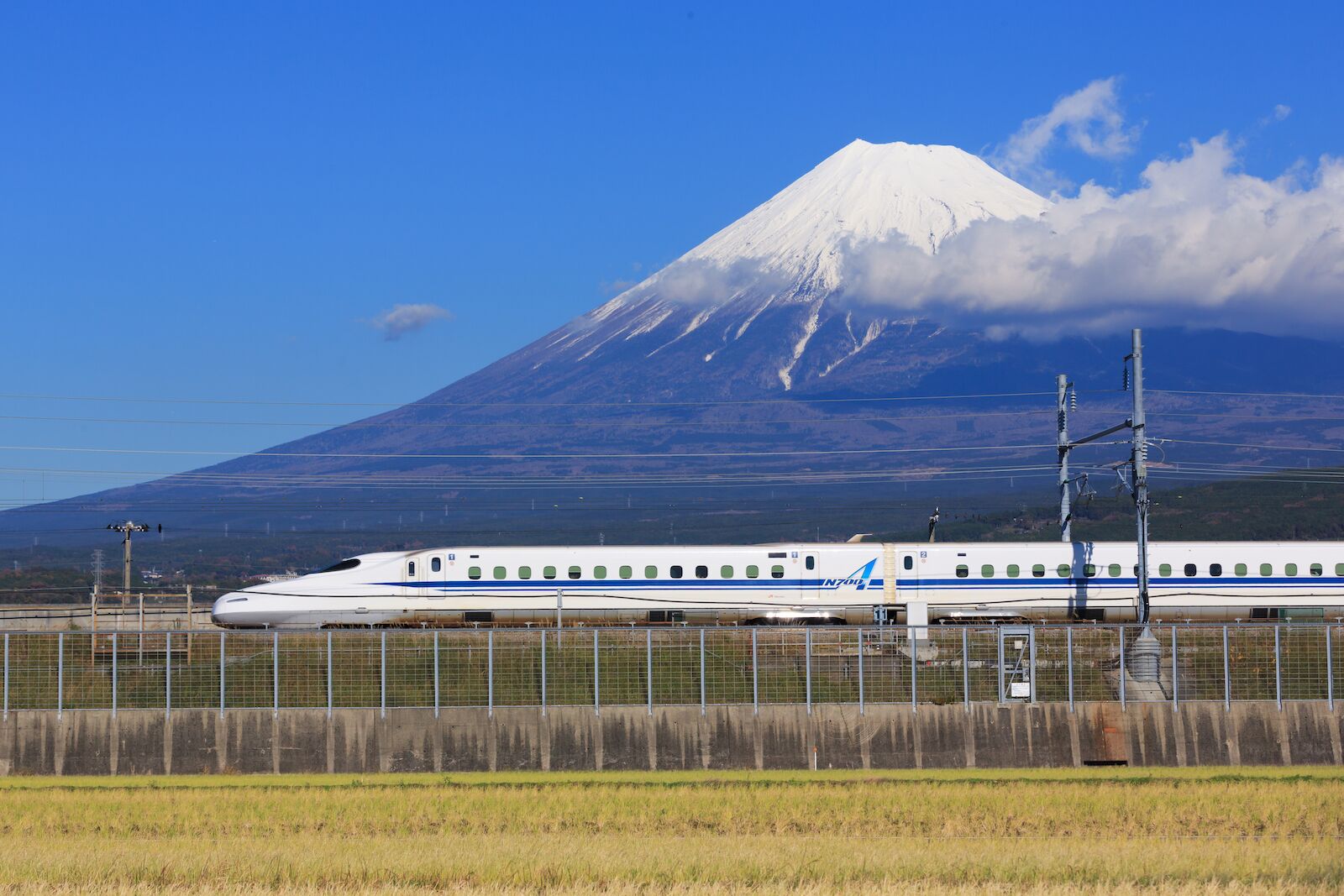
Photo: jiratto/Shutterstock
Japan is renowned for its bustling cities and advanced transportation network. Flying between the major cities of Tokyo and Osaka is the fastest option, but it also carries a higher environmental cost than taking Japan’s famed bullet trains. A one-way flight emits approximately 284 pounds (129 kilograms) of CO2 per passenger, primarily due to the relatively short distance of the route and the fuel-intensive nature of air travel during takeoff and landing.
In contrast, Japan’s renowned Shinkansen, or bullet train, provides an efficient and eco-friendly alternative. The high-speed rail system connects Tokyo to Osaka in around two and a half hours, boasting impressive punctuality and comfort. The Shinkansen is electrically powered, resulting in significantly lower emissions compared to airplanes. EcoTree estimates that you’ll emit a paltry 1 kg of carbon on this journey – less than what’s emitted when cooking a typical meal on a gas stove.
Beautiful things you’ll see en route:
- Mount Fuji: On a clear day, you might be fortunate enough to see Mount Fuji as you pass through the Shizuoka Prefecture. This majestic, snow-capped mountain is an iconic symbol of Japan’s natural beauty and is truly a sight to behold.
- Japanese Countryside: As the train makes its way through the countryside, you’ll witness the serene landscapes that characterize rural Japan. Rolling hills, lush green fields, and picturesque towns create a tranquil backdrop for your journey.
- Hikone Castle (Optional side trip): Although not directly on the train route, those interested in history and architecture can make a detour and visit Hikone Castle. Located near Lake Biwa, Hikone Castle is a well-preserved feudal-era castle known for its beautiful architecture and stunning views.
- Osaka Castle: As you approach Osaka, you can catch sight of Osaka Castle, one of Japan’s most famous landmarks. This historic castle, surrounded by a moat and situated within a beautiful park, offers a captivating glimpse into Japan’s feudal past.
Barcelona to Paris
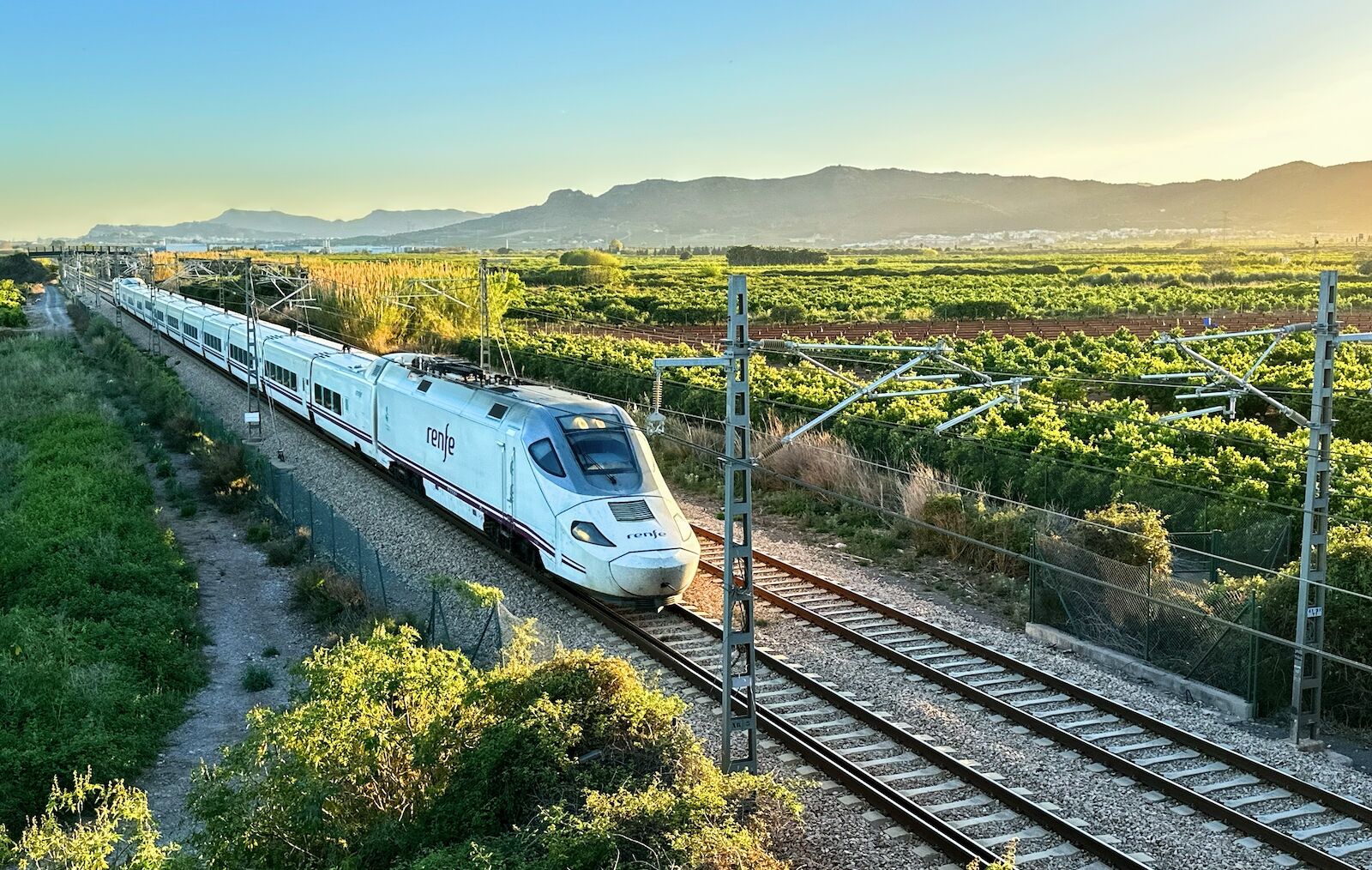
Photo: Maksim Safaniuk /Shutterstock
Flying between Barcelona and Paris covers a distance of approximately 526 miles (846 kilometers). On average, a one-way flight between these cities emits approximately 171 pounds (78 kilograms) of CO2 per passenger. In contrast, train travel between Barcelona and Paris offers a more environmentally friendly option. The high-speed train service, such as the TGV (Train à Grande Vitesse), connects these two vibrant cities efficiently. EcoTree estimates that this route via train emits about 27 kg of carbon, a reduction of more than 80 percent versus flying.
Beautiful things you’ll see en route:
- Mediterranean Coastline: As the train departs from Barcelona, you’ll have the opportunity to admire the stunning views of the Mediterranean Sea. The azure waters and sandy beaches create a picturesque backdrop as the train travels along the coastline.
- Pyrenees Mountains: As the train heads north, it passes through the Pyrenees Mountains, a stunning natural border between Spain and France. Enjoy breathtaking views of rugged peaks, deep valleys, and pristine landscapes as you traverse this mountainous region.
- Toulouse (Optional stop): While not directly on the train route, travelers have the option to make a stop in Toulouse, a vibrant city known for its beautiful architecture and rich cultural heritage. Explore the charming streets, visit historic landmarks like the Basilica of Saint-Sernin, and indulge in the local cuisine.
Berlin to Paris
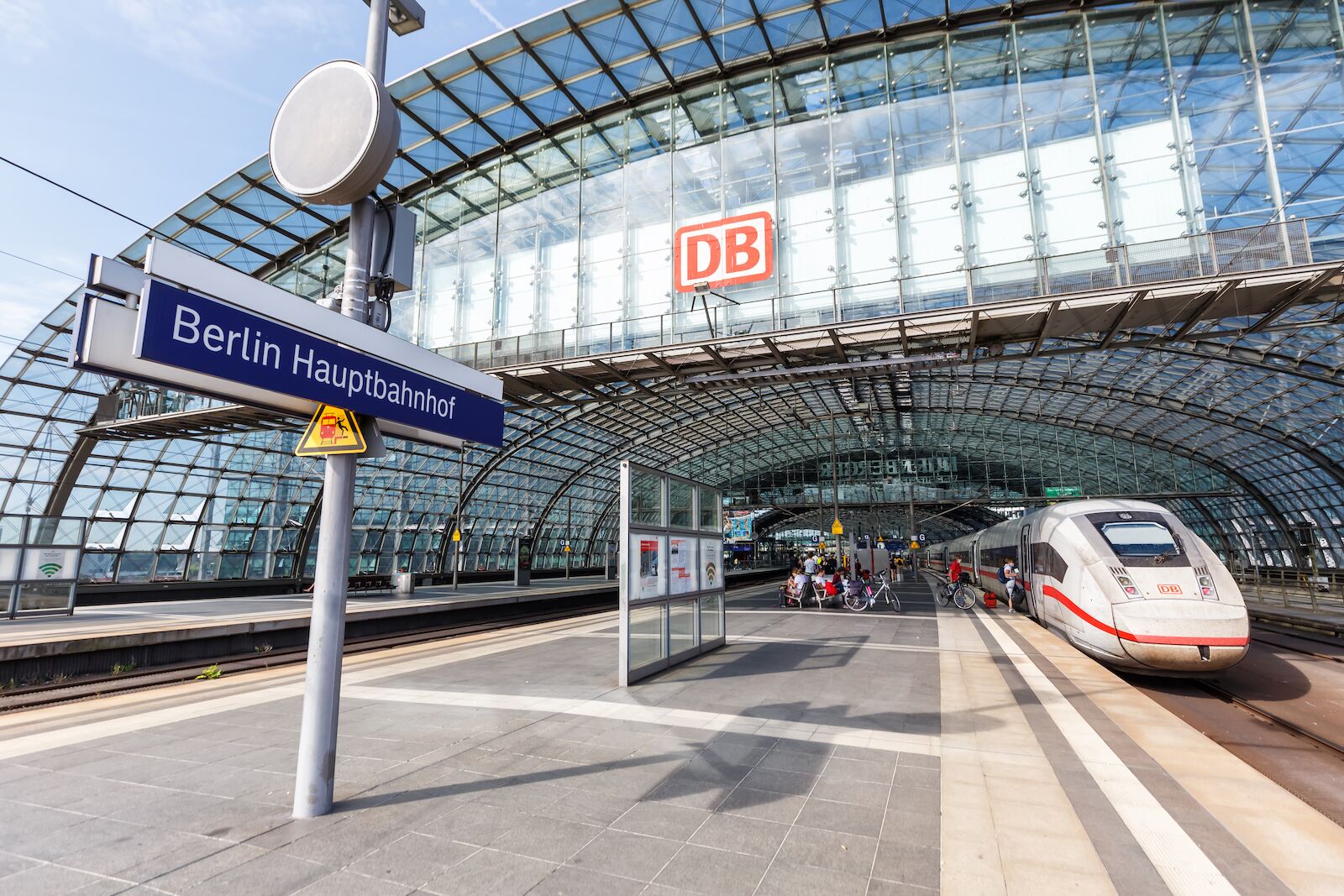
Photo: Markus Mainka /Shutterstock
Flying between Berlin and Paris covers a distance of approximately 655 miles (1,054 kilometers). On average, a one-way flight emits approximately 223 pounds (101 kilograms) of CO2 per passenger. The emissions from air travel are attributed to fuel consumption, takeoff, and landing procedures.
Train travel from Berlin is easy and connects travelers to points across Europe, Choosing train travel between Berlin and Paris offers a far more sustainable alternative. The high-speed rail networks of both countries provide efficient connections, such as the Thalys train. You’ll emit about 27 kg of carbon on this route, another example of train travel saving above 80 percent of the emissions of a similar flight.
Beautiful things you’ll see en route:
- German Countryside: As the train ventures westward through Germany, you’ll be treated to views of the country’s picturesque countryside. Rolling hills, quaint villages, and lush green landscapes create a serene and idyllic backdrop for your journey.
- Rhine River Valley: As the train crosses into western Germany, you may catch glimpses of the scenic Rhine River Valley. This UNESCO World Heritage site is known for its romantic castles, vineyards, and picturesque villages nestled along the banks of the river.
- Black Forest (Optional side trip): While not directly on the train route, travelers have the option to make a side trip from the city of Offenburg to explore the stunning Black Forest region. Experience the dense forests, charming towns like Freiburg, and the beautiful scenery that inspired fairy tales.
- Strasbourg, France: As you approach the French border, the train passes through the city of Strasbourg. This charming Alsatian city offers a unique blend of French and German influences, boasting a stunning Gothic cathedral, picturesque canals, and timber-framed houses.
Rome to Venice
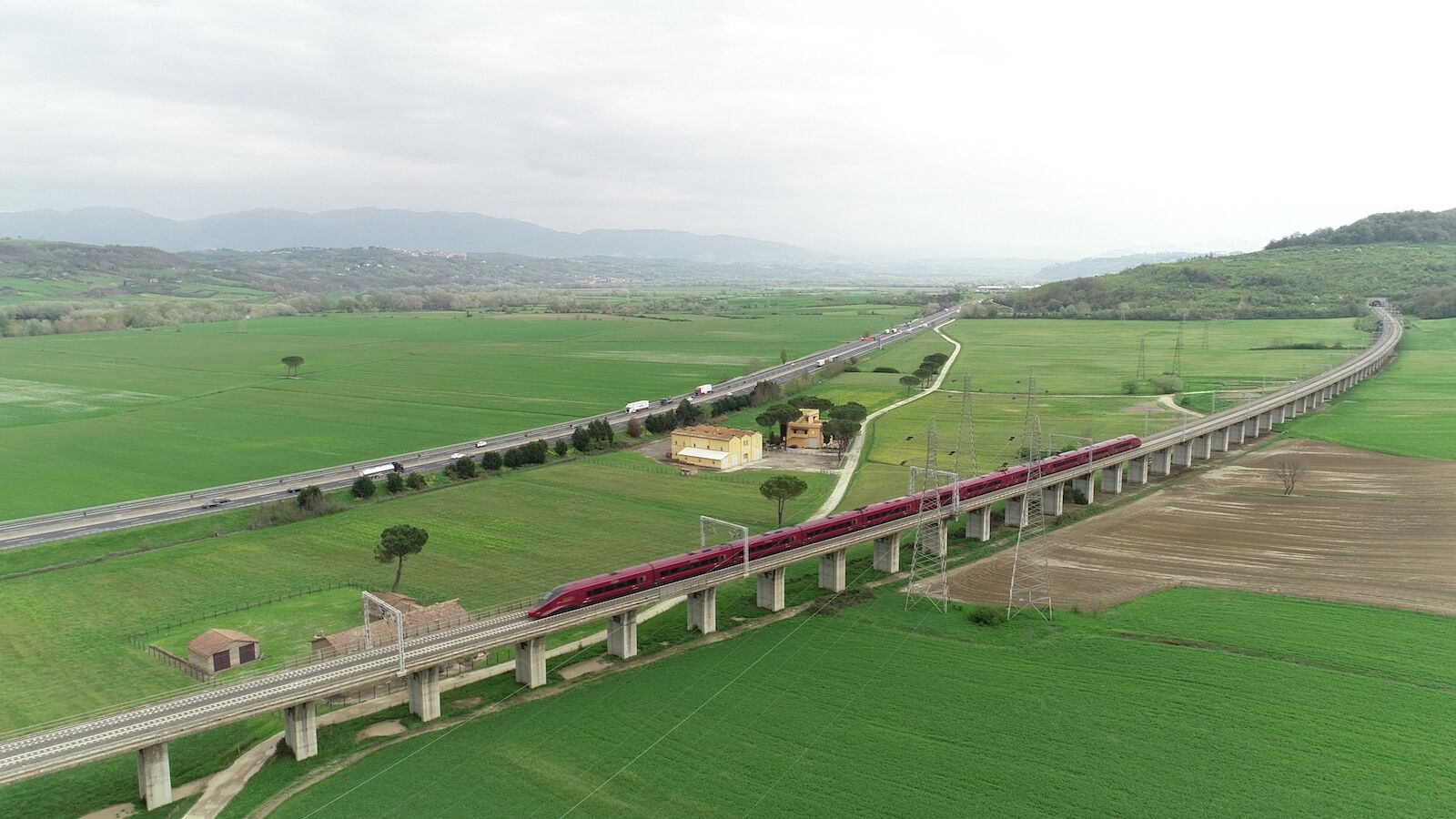
Photo: POINTLIGHT_IT /Shutterstock
The distance between Rome and Venice is approximately 330 miles (530 kilometers). Flying this short distance results in a disproportionately high carbon footprint, again due to takeoff and landing procedures. A one-way flight emits around 106 pounds (48 kilograms) of CO2 per passenger. Opting for train travel between Rome and Venice offers a more environmentally conscious choice. Italy’s efficient high-speed rail network allows travelers to reach their destination comfortably while significantly reducing their carbon footprint. Trains, such as the Frecciarossa, operated by Trenitalia, are electrically powered, resulting in considerably lower emissions compared to airplanes. Emissions hover around 14 kg for this route and are lower if the train is entirely electric-powered.
Beautiful things you’ll see en route:
- Veneto Region: As the train ventures through the Veneto region, you’ll pass by beautiful countryside views. Rolling hills, vineyards, and charming towns dot the landscape, creating a picturesque backdrop for your journey.
- Florence (Optional stop): Although not directly on the train route, travelers have the option to make a stop in Florence (Firenze) by taking a short detour. Florence is renowned for its rich history, stunning architecture, and artistic treasures, including the Florence Cathedral (Duomo), Uffizi Gallery, and Ponte Vecchio.
- Tuscan Countryside: The train journey through Tuscany offers glimpses of the region’s famous countryside. Olive groves, vineyards, and cypress-lined hills characterize the scenic landscapes, showcasing the beauty that has inspired countless works of art.